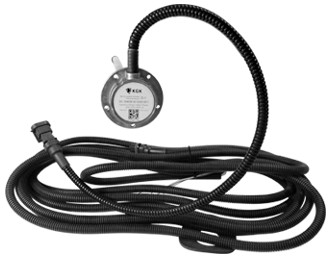How to extend the life of the fuel level sensor (FLS)
The fuel level sensor (FLS) is a control and accounting device that allows you to accurately monitor the fuel level in the tank and timely detect any deviations in the actual fuel consumption from the standard. The following are recommendations, how to increase the efficiency of your fuel gauge and prevent it from breaking.
The main causes of failure of the FLS are usually due to the following factors:
- Errors in the installation of the fuel sensor;
- Improper sensor operating conditions;
- Intentionally damaging the device;
- Select a low-quality sensor.
Consider how to avoid the above problems and increase the life of the FLS.
Features of installation of FLS
Only qualified personnel should install the fuel level sensor. This will not only provide reliable data from the device, but also extend its life. After all, the effectiveness of the use of FLS directly depends from the qualifications of installers and the quality installation of equipment.
Often, fuel level sensors are installed by people who do not have the necessary knowledge about the operation of a fuel level sensor and installation experience. Their mistakes lead to the fact that the FLS wears out sooner than its usual service life.
We list the main points to which special attention should be paid when installing a FLS.
- Sensor position selection. The sensor should be installed in the center of the fuel tank. In this case, when the vehicle is tilted, accelerated, or braked, the fuel level at the measurement point is less likely to fluctuate. Measuring the probe should be oriented vertically downward. Other methods of installing a fuel level sensor are considered incorrect. Incorrect installation of the fuel level sensor leads to the removal of incorrect readings from the sensor;
- The length of the fuel gauge probe. The FLS probe should be installed 1.5-2 cm above the bottom of the tank. During the operation of the vehicle, deposits, dirt and water accumulate at the bottom of the fuel tank. If you do not carry out preventive cleaning of the tank, such deposits can get into the measuring part of the FLS. As a result, the dielectric constant of the medium will change dramatically and the readings of the FLS will become erroneous. To protect the FLS from dirt, a special insulating cap is provided, which comes complete with FLS. It is installed on the FLS after trimming the sensor to the required length. The protective cap should be installed on the sealant, otherwise dirt and precipitation may get inside the sensor, which will cause constant errors in the devices recordings. If the gap between the bottom of the tank and the end of the fuel level sensor is too small, then, with thermal expansion or vibration, the FLS will hit the bottom of the tank. This will lead to wear of the sensor and, accordingly, to its breakdown;
- Using sealant. When installing a FLS, installers use sealant. It is added under the gasket of the fuel level sensor to prevent fuel leakage. However, if you use too much sealant, it will leak when tightened into the tank along the walls of the FLS pipe and plug the drainage holes. If the holes are completely closed, the FLS will break or begin to provide data with an error. This is due to the fact that the air outlet from the level sensor tube fuel when filling it with fuel is difficult;
- Cable routing FLS. The cable route of the FLS should not pass near moving or heating parts of the exhaust system of the car. Wires should be laid in the corrugation, and not in the "tightness". Due to incorrect installation they can rub against a metal angle and short-circuit during operation. Shorting the wires to each other in the route will easily disable the FLS.

Sensor Operating Conditions
Among the main reasons for the failure of fuel sensors are also improper operating conditions and the use of low-quality fuel. Therefore, when working with FLS, it is important to consider the following tips:
- Use only high-quality fuel. When using low-quality fuel in a car tank, the FLS measuring tube gradually begins to become covered with deposits. At first, the error in the changes in the FLS is hardly noticeable, but over time it increases significantly. Even after recalibrating the sensor, it is not possible to solve the problem with the accumulation of deposits inside the FLS measuring tube. Due to deposits, fuel and air will pass through with great difficulty, as a result of which the quality of the fuel level sensor will decrease - as a result, it will have to be replaced. Therefore, the better the fuel, the longer the fuel level sensor will last;
- Avoid mechanical damage to the sensor. Install the FLS in such a way as to minimize the possibility of mechanical damage. The fuel level sensor consists of a measuring head (mounted on the fuel tank cap) and a probe (placed in the tank). During the work of construction equipment, there are frequent cases of damage to tanks or wiring of a fuel level sensor. When installing the FLS, it is recommended to install power elements over its head that do not allow sensor wear. Such elements can be ordered from manufacturers of FLS or made independently;
- Protect the power supply circuits of the FLS. Short-term power surges in a vehicle can damage the FLS. For a new serviceable car, the risk of such a situation is small. But for cars that have been used for many years, the probability of a malfunction in the wiring is quite high. Fuel level sensors have surge protection, but it is not always effective. FLS is a small device, and it is impossible to fit an effective protection circuit into it. Therefore, when installing the fuel level sensors, care should be taken to install an additional power circuit protection device.
Vandalism protection
Often there are situations when unscrupulous drivers try to "cheat" or break the FLS. To avoid such cases, vehicle owners seal the connectors and mountings of the fuel level sensors. But, unfortunately, this is not enough. There are many ways to disable FLS without removing the seals. Therefore, the prudent owner of the fleet should, first of all, properly organize the work with staff.
For effective fuel monitoring, it is recommended that you follow a few rules:
- Ensure the accuracy of the information from the fuel sensors. The installation company will help you with this, which must carry out professional installation of equipment with a demonstration of control fueling discharges. When identifying situations with exceeded fuel consumption or drain, the owner must be fully confident in the reliable operation of the system in order to correctly identify the culprit of the incident;
- Control and analyze data from fuel sensors trust only those employees who are not interested in draining fuel;
- After the introduction of monitoring, establish an adequate system of fines and incentives so that it would be unprofitable for drivers to carry out unauthorized fuel draining;
- Carefully select employees and appreciate their work. A driver who is satisfied with working conditions, workload and salary will not steal fuel and travel on "left" flights. Thus, careful selection of staff, decent and timely payment will increase the life of your equipment.
Choosing a quality sensor
Currently, a wide variety of fuel sensors are presented on the FLS market, so the choice of high-quality equipment is a difficult and very responsible task. But if you are serious about choosing a manufacturer and brand FLS, then purchased sensors will last longer and will not cause you problems.
The fuel level sensor is a complex technological device, the development and testing of which can take several years. Often in the process of operation, design flaws of such devices can be identified, and they are not immediately, but only after some time after using the device. The technical capabilities of some fuel sensors during practical testing are ineffective. Such sensors often break, and customers are forced to change. In this case, you have to spend time and money on the purchase of new FLS, on the replacement of devices and recalibration of tanks. All this reduces the efficiency of the client, as well as the reputation of the company - the service provider.
How to choose a high-quality fuel level sensor that does not require frequent replacement and repair? We recommend that you select such FLS that have been tested in practice by other users and have positive reviews.
If you plan to order fuel level sensors in bulk, contact the manufacturer. The presence of a package of certificates for FLS is one of the main indicators of reliability of a manufacturing company. If possible, visit a facility where Sensors are manufactured to evaluate technological processes and control at all stages of the assembly of FLS. Do not trust manufacturers that have been selling sensors for less than a year. Minimum time for full testing of FLS and collection statistics on its operation - two years.



